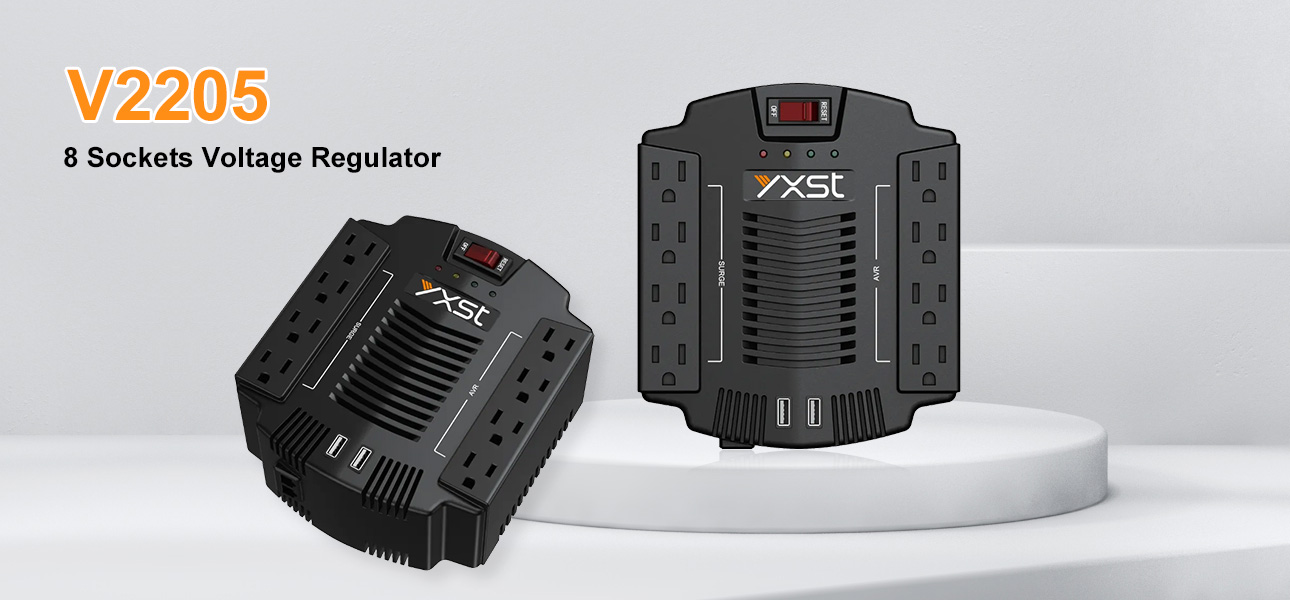During the peak electricity consumption period in summer, voltage fluctuations are extremely frequent, causing household electrical appliances to operate in an undervoltage state for a long time, which directly leads to frequent starts and stops of electrical appliances, and also causes increased current, damaging electronic components, seriously affecting the safety and service life of electrical appliances. In this case, the single phase voltage regulator plays a very important role.
Understand the power requirements of electrical devices
You need to know the total power of all devices that require a stable voltage, including computers, TVs, refrigerators, air conditioners, and all other appliances that need to be powered by a single-phase voltage regulator. The power of the device is usually marked on the nameplate of the device, usually in watts (W) or kilowatts (kW).
Steps:
Check the power of all devices that need to be connected to a single-phase voltage regulator (such as computers, air conditioners, refrigerators, electric fans, etc.).
Add the power of all devices to get the total power.

Example:
Suppose you need to connect the following devices:
● Computer: 300W
● TV: 150W
● Electric fan: 75W
● Total power = 300W + 150W + 75W = 525W
Calculate the power of the required single-phase voltage regulator
In order to ensure that the single-phase voltage regulator can operate stably and leave a certain safety capacity, it is usually recommended to choose a voltage stabilizer with a power of 1.2-1.5 times the total power of the connected devices. Some equipment, especially motor or compressor equipment (such as air conditioners, refrigerators, washing machines, etc.), may consume more power at startup than in normal operation. This power is the starting power of the equipment (usually 1.5 to 3 times the normal power).
Example:
If you have an air conditioner with a power of 1000W, it may require 2000W of power when it starts. Therefore, it is very important to consider the starting power of the equipment.
Calculation of voltage stabilizer capacity
When selecting a voltage stabilizer, it is generally necessary to select a voltage stabilizer with a rated power greater than or equal to the total power of the equipment. In order to ensure that the voltage stabilizer can also operate stably when the equipment starts, it is usually recommended to multiply the calculated total power by a safety factor, usually 1.2 to 1.5 times.
Calculation formula:
Power of voltage stabilizer (VA) = total power (W) × safety factor (1.2 to 1.5)
Example:
Assuming the total power of the equipment is 525W, considering that the equipment may have a starting current, the safety factor is 1.5, then:
Power of single-phase voltage stabilizer = 525W × 1.5 = 787.5W
In order to ensure that the voltage stabilizer has sufficient load capacity, it is more appropriate to choose a voltage stabilizer with a rated power of 1000W or 1kVA. The rated power of the selected voltage stabilizer should be greater than the total power, and the instantaneous load when the equipment starts should be considered.

Consider the fluctuation range of the grid voltage
In addition to the power requirements of the equipment, the fluctuation range of the local grid voltage must also be considered. If the voltage fluctuation is large, you need to choose a voltage regulator with a wider voltage adjustment range to ensure that the equipment can provide a stable voltage under various voltage conditions.
Determine the type of single-phase voltage regulator and the operating voltage
Voltage regulator type: Common voltage regulators include linear voltage regulators (such as transformer-type voltage regulators) and switching voltage regulators (such as voltage regulators). When choosing, you can decide based on the actual use environment and the requirements for stability and efficiency.
Operating voltage: Make sure that the input voltage range of the voltage regulator matches the voltage range of the local grid, and the output voltage must meet the rated voltage requirements of the equipment.
Consider the efficiency and working environment of the single-phase voltage regulator
Efficiency:
The working efficiency of the voltage regulator will affect the performance of the equipment. When choosing, you can check the efficiency parameters of the voltage regulator. Choosing an efficient device can reduce energy waste.
Working environment:
Choose a suitable voltage regulator model based on factors such as the temperature and humidity of the use environment. Some voltage regulators are designed for outdoor environments, while others are only suitable for indoor use.

When purchasing a single-phase voltage regulator, you should also choose a regular brand and channel to ensure product quality and after-sales service. At the same time, according to the specific conditions of the use environment and equipment, regularly inspect and maintain the voltage stabilizer to extend its service life and ensure safe use.




